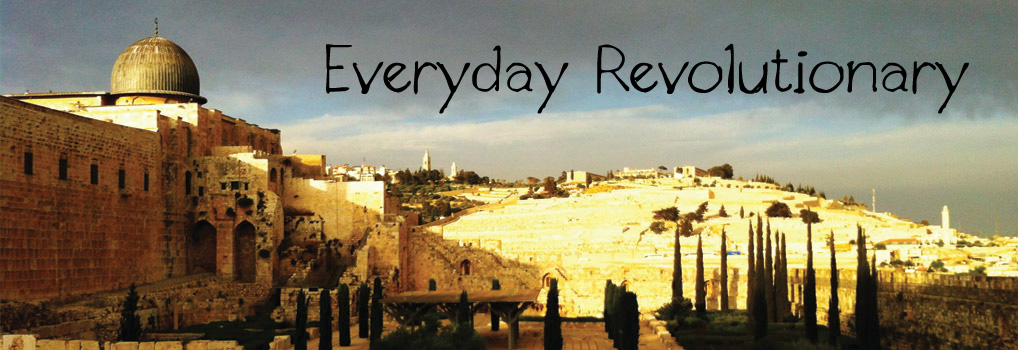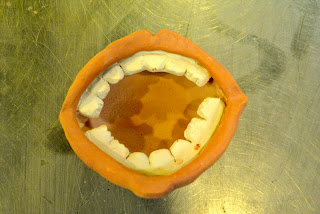This is the second part of my essay on spirituality and creativity. Let me know your thoughts!
It is rare in our culture to see creativity integrated so well within the context of the Church. It is far more common to be met with an attitude that communicates to others that life is life and church is church, and never the twain shall meet. However, spiritual creativity is holistic—it affects not only the spirit, but the body, mind, and heart, as well. For instance, food shortages and nutrition have become global issues, as well as the protection of our struggling environment. In recent years, sustainable living has become a growing interest among those disenfranchised with the rising tide of the so-called “green revolution.” One solution advocated by—but not limited to—Christian grassroots organizations and intentional communities is experimentation with private and community gardening. Birthed out of a “fast food nation” in which the average American adult can simply run to the nearest Wal-Mart and purchase cheap frozen pizzas, community gardening has opened a new perspective on food, health, and the environment in both rural and urban areas. In a Christian context, many communities have discovered the creative and spiritual link between care for the environment and our bodies and the calling for faithful care of God’s creation. Christian intentional communities have met a problem (the growing global food crisis, global warming) and produced a reasonable, small-scale solution from their human (and God-given) gifts of creative problem solving.
“What’s this?” I asked Jason as we toured the block, indicating a fuzzy, fluffy-looking plant sprouting from the Hyaets landscaping.
“That’s lamb’s ear,” Jason replied. It’s a handy household plant to have around; you can eat the leaves like spinach greens, but it’s also used medicinally, like aloe. Put a strip of lamb’s ear on a cut, and it heals almost twice as fast.” How fascinating! In what universe would this be considered common knowledge? Jason and the members of Hyaets are bringing in something new and useful through their creative spirituality, inspiring the community around them to exercise their creative gifts.
I say all this not to belabor the reader with my passion for community gardening or New Monastic intentional communities, but instead to illustrate the fact that when creativity is real and organic, it is inevitably a spiritual event. My time in the monastery and my experience with this course awoke something within me that was already there, but lying dormant—the very nature of creativity and education; discovering something you already knew about yourself, but drawing it out and looking at it with new eyes. The brothers and fathers at Conception Abbey may not be building clubhouses for neighborhood children (though, for all I know, they may very well be growing lamb’s ear), but their spiritual creativity manifests itself in different ways—namely, in the creative process of education.
In our exercises with one of my professors, we were tasked with discovering our “vocation,” or our “quest.” I was forced to think about what exactly brought me to seminary in the first place. Sitting in the classroom packed with fellow CREATE cohort members, I felt vastly out of place among brothers and sisters who seemed—by my perception—to be of the charismatic personalities which lead to pastorships and other leadership positions within the traditional infrastructure of the church. But this has never been my quest, or my calling. The more I meditated on this notion of quest, however, and the more I fell in love with the daily liturgical prayer and simple lives of the brothers and fathers around me at the abbey, the more I began to sense that God has something different, something new in store for me. A spiritual idea born of creativity.
I left the course with—I do not think I can overstate this—a completely altered view of what my life pursuit will be, and my conversations with Mark (who happens to be of a mindset very similar to mine) since then have only served to embolden me further. Each subsequent conversation has left me feeling much like Chief Dan George’s character in the film Little Big Man, who claims, “My heart soars like a hawk.” My role in life is not the role of pastor, or of youth pastor, or of church council member or finance chairman. After leaving the abbey, I discovered that my true vocation is to start a monastery of sorts. A New Monastic community in the Kansas City area called Anavah House, from the Hebrew word for humility, or discovering or knowing one’s place in the grand design of God’s creation. Once I rested in this notion of vocation, I gained a renewed fervor and quest, and all the pieces of my life now seem to be making more sense. I have fallen in love with the potter’s wheel through a class I’ve been taking at my university—this is subsequently a skill that can be put forth as a creative way of supporting the community once it establishes itself. I have spent years studying community development and gardening, as well as developing interpersonal skills that define me as an empathetic person, understanding of the needs of a group of people. And as long as I can remember, growing up in the United Methodist Church I have been fascinated by liturgical prayer, communal worship, and contemplation. Through this class, all of these pieces of me have come together at last to make a little clearer the integrative whole of my vocation and place in the world, and I am chomping at the bit to get started.


















































